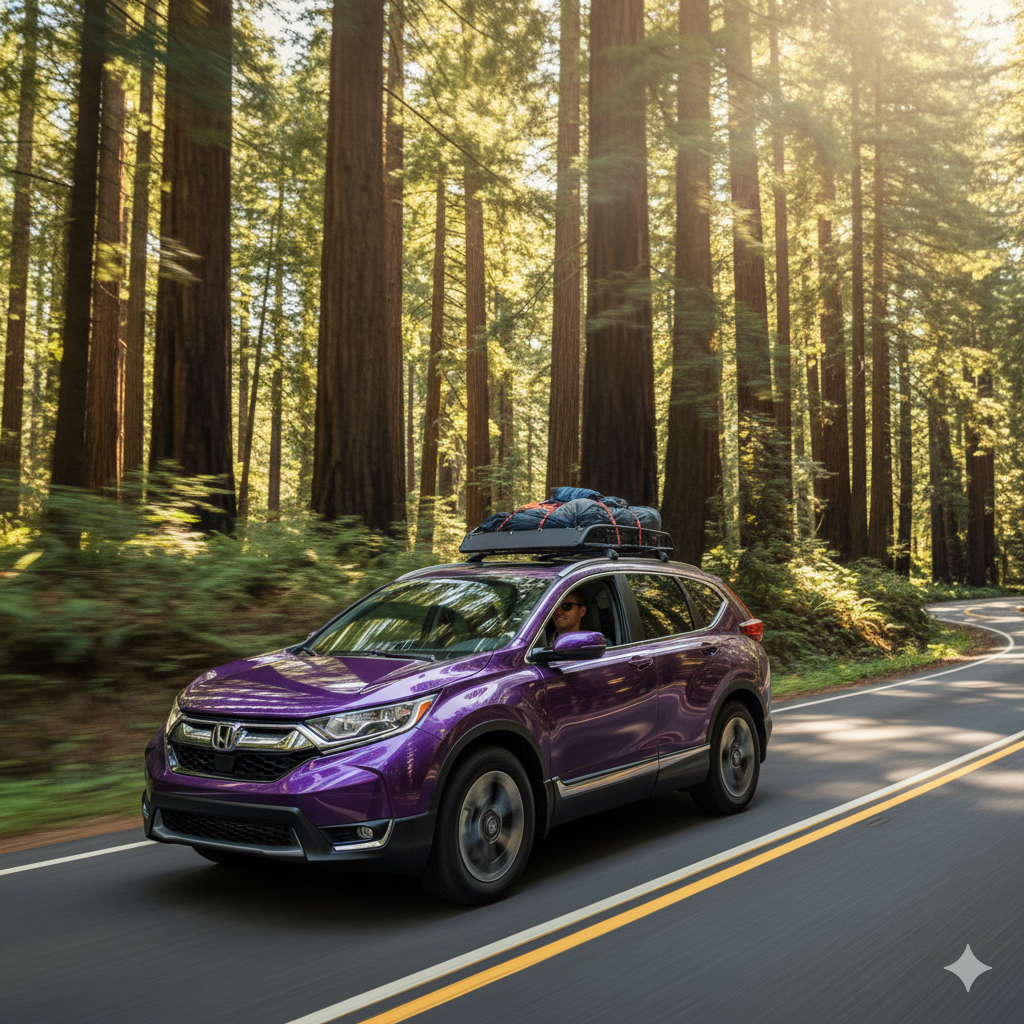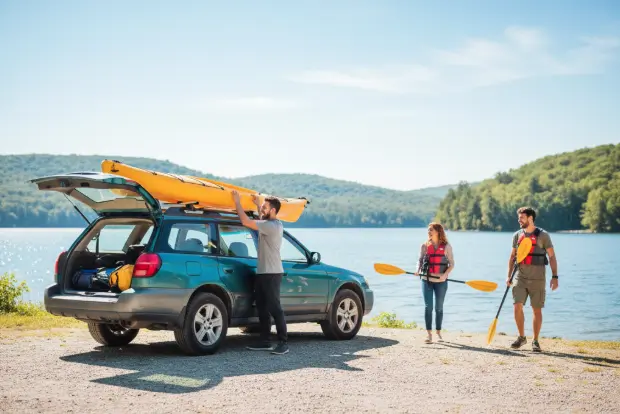The six main types of car insurance are liability, collision, comprehensive, uninsured motorist, personal injury protection and medical payments. Together, they keep you from paying thousands out of pocket when something goes wrong on the road.
Jerry has helped over 124,022 drivers get the right coverage this year, with policies that include the main types of car insurance. Here’s what each one does and whether you actually need it.

Jerry pulls up to 20 quotes from top rated carriers.
What you’ll pay for coverage
Full coverage (liability + collision + comprehensive) typically costs between $185 to $417. Individual coverages vary based on your deductible and limits.
State minimum liability
Cost: $80 – $186 per month
Full coverage
Cost: $185 – $417 per month
Uninsured motorist coverage*
Cost: $29 per month
Personal injury protection*
Cost: $61 per month
MedPay*
Cost: $25 per month
*Represents the most competitive price Jerry users have found when adding this coverage to a liability-only policy.
Based on Jerry customers with clean driving records who found savings in the past 12 months. Savings vary by state, coverage, driver profile and other factors.
Your actual cost depends on where you live, your driving record and what you drive. Rates for the same coverage can vary by hundreds of dollars between insurers.
Key takeaway: Insurance companies price coverage differently—even for identical policies. You can compare quotes on the Jerry app to find the coverage that’s best for you.
Compare coverage options through Jerry
When you shop for car insurance, compare rates for different coverage types and add-ons to see how they affect your total price. Jerry shows you quotes from 50+ carriers side-by-side so you can see exactly what each insurer charges for the coverage you need.
If your rates go up at renewal, you can use the Jerry app to check what you’d pay with other carriers. You might find the same coverage for significantly less.
Deep dive: Types of car insurance
Liability insurance (Required by law)
Liability covers damage you cause to others in an accident. It has two parts:
- Bodily injury liability: Pays for other people’s medical costs, lost wages and legal fees when you’re at fault.
- Property damage liability: Pays to fix or replace other people’s vehicles and property when you’re at fault.
Key takeaway: Nearly every state requires liability insurance. New Hampshire is the only exception.
Understanding liability limits
Liability limits are typically written in the format of “100/300/100”. Here’s what it means:
- $100,000 bodily injury liability, per person, or the maximum amount covered for one person’s injuries.
- $300,000 bodily injury, per accident, or the maximum amount covered for all injuries combined.
- $100,000 property damage liability, per accident, or the maximum amount covered for property damage you cause in a crash.
Why it matters: State minimum coverage limits are often too low to cover the cost of a serious accident — the average severe crash costs over $160,000, according to the National Safety Council. Jerry recommends drivers to consider at least 100/300/100 in liability coverage to lower the risk of becoming financially responsible for costs that go beyond your policy limits.
Learn more: Liability insurance vs. full coverage
Collision and comprehensive coverage
Collision and comprehensive coverage, when combined with liability insurance, make up “full coverage” insurance. Lenders require both if you’re financing or leasing your car.
Here’s what each covers:
Collision insurance:
Pays to repair your car after hitting another vehicle or object, regardless of who’s at fault.
Comprehensive insurance:
Pays for damage from everything except collisions, including theft, vandalism, weather events, animal strikes, fire and falling objects.
Both have deductibles (what you pay before insurance kicks in). Common deductibles are $250, $500, or $1,000. The higher your deductible, the lower your premium is.
Jerry recommends: If your car is worth more than $2,000–$3,000, you should consider adding comprehensive and collision coverage to your policy.
Learn more: What does full coverage car insurance cover?
Uninsured/underinsured motorist coverage
This protects you when you’re hit by someone who either has no insurance or doesn’t have enough to cover the damage they caused.
About 15% of drivers in the U.S. don’t have car insurance. That’s roughly 1 in 7 drivers on the road with you.
- Uninsured motorist (UM): Covers accidents with drivers who have no insurance.
- Underinsured motorist (UIM): Covers accidents when the at-fault driver’s limits are too low to pay for your expenses.
Jerry recommends: Even if your state doesn’t require UM/UIM coverage, Jerry recommends adding it. If you get into an accident, there’s a decent chance the person who hits you won’t have adequate coverage to pay your bills.
Personal injury protection (PIP)
PIP covers your medical expenses after an accident. It pays regardless of who caused the crash.
Depending on your state, PIP also covers:
- Lost income if you can’t work.
- Ambulance services.
- Childcare expenses while you recover.
- Funeral costs.
PIP is required in 12 no-fault states: Florida, Hawaii, Kansas, Kentucky, Massachusetts, Michigan, Minnesota, New Jersey, New York, North Dakota, Pennsylvania, and Utah.
Key takeaway: PIP is expensive in no-fault states because it pays out regardless of fault. If you live in Michigan or New Jersey (two of the most expensive states for car insurance), PIP is a big reason why.
Medical payments coverage (MedPay)
MedPay is similar to PIP, but it only pays for medical costs, nothing else.
MedPay pays for you and your passengers after any accident, whether you’re at fault or not. It also pays if you’re hit as a pedestrian or injured in someone else’s vehicle.
Key takeaway: MedPay can cover your health insurance deductible. If you have a $3,000 health insurance deductible and $5,000 in MedPay, your car insurance covers that gap. Even with good health coverage, MedPay fills holes your health insurance won’t.
Other coverage types worth knowing about
These aren’t part of the “six main types,” but you’ll see them when shopping for insurance.
- Gap insurance: Pays the difference between your car’s value and your loan balance if it’s totaled or stolen. Critical if you owe more than your car is worth.
- New car replacement: Covers the cost of a brand new vehicle of the same make and model after a total loss (instead of your car’s depreciated value).
- Rental car reimbursement: Pays for a rental while your car is being repaired after a covered loss.
- Roadside assistance: Provides towing, jump-starts, flat tire changes, and locksmith services when you have comprehensive and collision coverage.
Key takeaway: “Full coverage” doesn’t include roadside assistance or rental reimbursement. Those are add-ons you pay extra for. If you assumed your full coverage policy included a rental car after an accident, check your policy to confirm you actually do have the coverage.
Learn more: How much car insurance do I need?

It only takes 2 minutes to sign up at Jerry.
FAQ
-
✅ Is car insurance required by law?
-
🚗 What’s the difference between collision and comprehensive?
-
💰Do I need full coverage if my car is paid off?
-
⚠️ What happens if I don’t have enough liability coverage?
-
🎯 How much uninsured motorist coverage do I need?
-
📋 What’s the difference between PIP and MedPay?
Methodology
Data included in this analysis comes from policies that Jerry has quoted within the last 6 months for drivers with a clean record and that have full coverage, unless stated otherwise. Data related to violations, accidents or credit scores pull from quote data from the last 18 months. Jerry services 48 states and offers a range of insurance companies to choose from.

Ben Moore is a writer and editor at Jerry and an auto insurance expert. He previously worked as a writer, editor and content strategist on NerdWallet’s auto insurance team for five years. His work has been published in The Associated Press, Washington Post, Chicago Sun-Times, MarketWatch, Nasdaq and Yahoo News. He also served as a NerdWallet spokesperson, with appearances on local broadcast television and quotes in Martha Stewart and Real Simple magazine.
Ben has an extensive background in digital marketing, working on affiliate and programmatic advertising campaigns for brands like Cabela’s, H&R Block and Sears. He holds a bachelors degree in marketing from Olivet Nazarene University.






